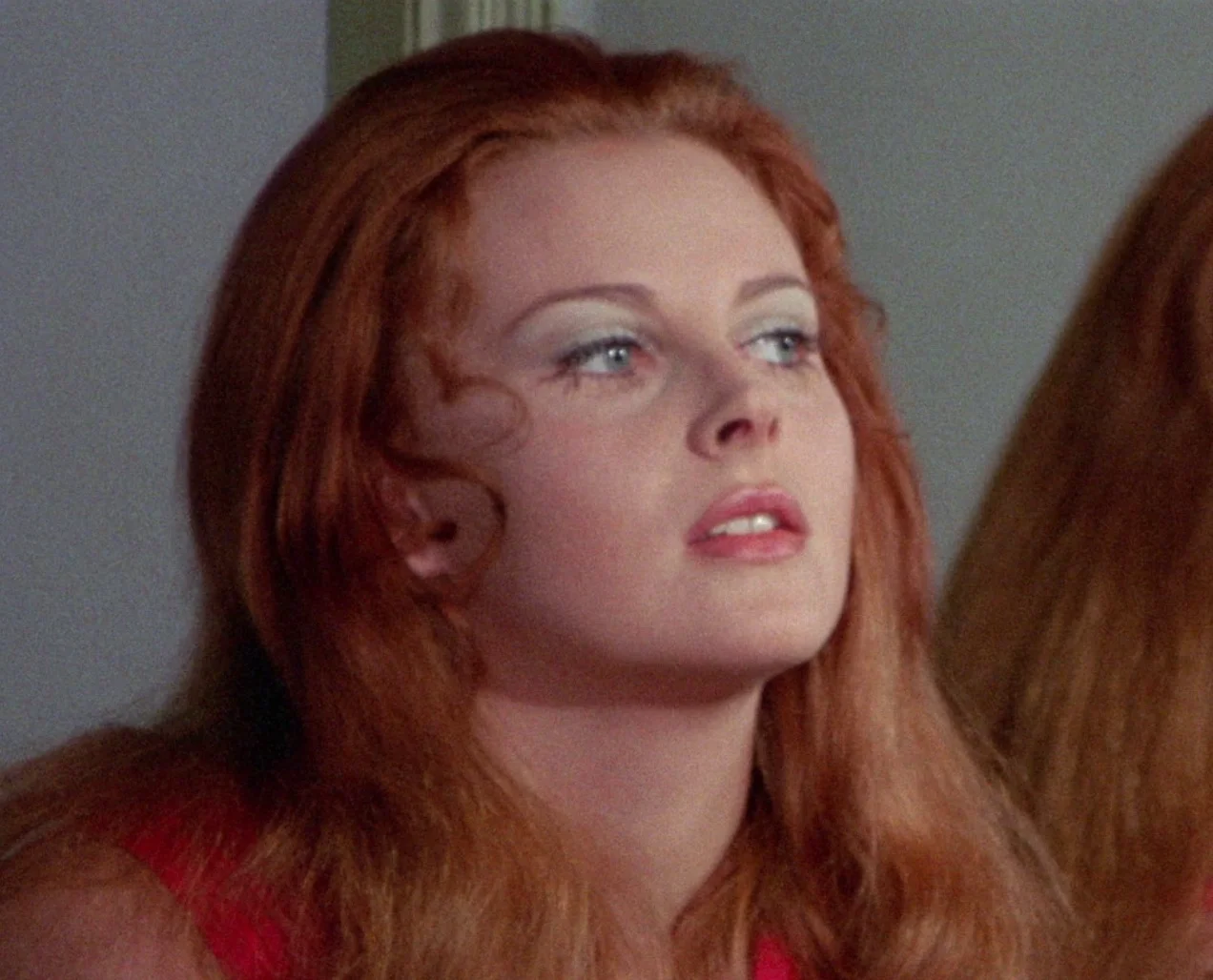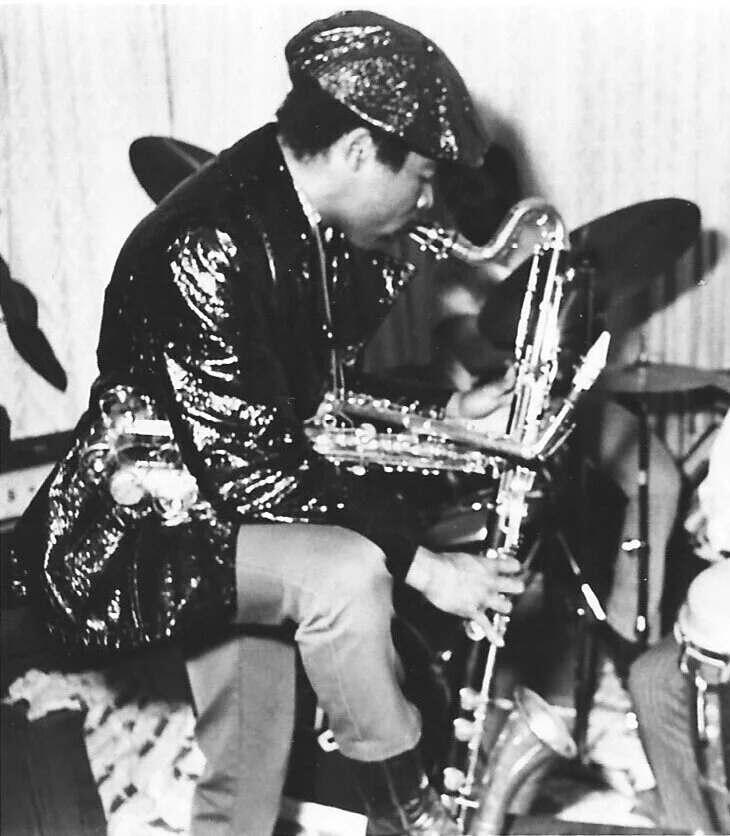The Voluptuous (and Telling) Pleasures of Obscure Gialli | Vague Visages
DAGMAR LASSANDER IN THE FORBIDDEN PHOTOS OF A LADY ABOVE SUSPICION (COURTESY OF ARROW FILMS).
by Julia Bozzone
Some of the movies playing in Quad Cinema’s series “Fresh Meat: Giallo Restorations, Part II” are among the most striking, beautifully shot films I’ve ever seen, with sequence upon sequence composed in an aesthetically pleasing way. These are not profound movies (at least not in the usual highbrow sense of the word), but they are thought-provoking in a multitude of ways. You wouldn’t watch The Fifth Cord (1971) for its flimsy plot or The Forbidden Photos of a Lady Above Suspicion (1970) if you’re in the mood for an austere or realistic drama. But as artifacts of and portals into the 70s, these are compelling films that also manage to be entertaining, and they’re often fascinating in other ways too.
These colorful and supremely stylish movies are part of a giallo series that is now playing in Manhattan. The word giallo originally referred to the paperback detective novels written by Italian authors in the era when Benito Mussolini banned the importation of crime fiction. One publisher famously released a line of books with yellow covers (giallo means yellow in Italian) and the public came to associate the color with pulp fiction mysteries and crime stories. Today, English speakers use the word to mean a European thriller-horror hybrid movie. As author Adam Cesare notes, these are both suspenseful, Hitchcockian movies, in which the lesser-known filmmakers have lavished unusual care upon all aspects of the aesthetics. The creative compositions in both movies highlight alluring people, as well as outstanding set design, location scouting, clothing, makeup and interiors. Period details abound that will delight even the most casual viewer.
The Italian-Spanish production of director Luciano Ercoli’s The Forbidden Photos of a Lady Above Suspicion begins with the bored, pampered housewife Minou (Dagmar Lassander) in the bathtub of her vacation home, vowing to herself (via internal monologue) that she’ll quit smoking cigarettes, drinking whiskey and taking the tranquilizers that sooth her nerves on a regular basis. Minou is positioned as a kind of trophy wife within a decadent life filled with gilded surfaces (and accentuated by a glitzy Ennio Morricone score). Her businessman husband, Pier (Pier Paolo Capponi), is affectionate and protective of her but distant.
From a cinematographic standpoint, a lot is made of the way Minou looks in order to make it clear that she is married to Pier mainly because she is so presentable. When Minou wakes up in the middle of the night, Ercoli shows that her blue eyeshadow extends all the way up to her eyebrows; her coral-pink lipstick and orange hair are neatly in place. Minou’s life is luxurious, but it’s all so empty — and that’s the point. One senses that Lassander was chosen to play Minou almost completely for her striking, slightly exotic photographic qualities –- she is of French-German-Chilean lineage –- rather than for her acting ability. That’s not to say that her performance is lacking. It isn’t. But Lassander’s ability to look and behave like the a 1950s-era fashion model playing the dutiful wife is paramount in The Forbidden Photos of a Lady Above Suspicion.
DAGMAR LASSANDER IN THE FORBIDDEN PHOTOS OF A LADY ABOVE SUSPICION (COURTESY OF ARROW FILMS).
One evening, a mysterious man accosts and assaults Minou. Then he tells her that her husband is a murderer and he has a tape of an incriminating phone conversation. A distressed and destabilized Minou is willing to do whatever it takes to protect her husband’s name and honor. Does her husband have a guilty conscience or is he genuinely absorbed in his work at a diving-equipment-making firm? It’s not clear. But given the lengths she will go to for her husband, one may logically question his loyalty to her. Minou offers exorbitant sums of money in exchange for the tape. But it’s not cash that interests the blackmailer. “You didn’t understand anything, Minou. I’m the master of your soul, of your body,” the blackmailer tells her. “You’re insane,” she replies. “I want what I like,” he insinuates, “And I will take it. Life is for pleasure.”
The Forbidden Photos of a Lady Above Suspicion feels perverse because it deals with blackmail and messed-up relationships. Apart from the over-the-top dialogue and the baroque setting, the extortion in the movie seems eerily akin to the crimes of recent years in which culprits expose (or threaten to expose) intimate photos or videos of high-profile people. In the nearly 50 years since the film’s release, some progress has been made on the relationship front –- Minou and Pier’s retrograde marriage feels old-fashioned, even for its time –- but Ercoli’s portrayal of sexual blackmail and his depiction of female frenemies are evergreen. Little has changed in these areas.
Spanish bombshell Nieves Navarro (billed as Susan Scott) — who became the director’s wife soon after this movie was released and is now his widow – plays Minou’s saucy and flirtatious best friend Dominique. One reviewer describes Dominique as “the level-headed” friend in contrast to the more fragile, neurotic Minou, which may be true. But there’s also something that seems highly untrustworthy about Dominique. She dresses in blatantly sexy outfits to dinner with Minou and Pier, looks at him (as well as everyone else) in an outrageously suggestive way and thinks nothing of hanging out with Pier for hours at his home while Minou is out. Dominique, in other words, is definitely not a lady above suspicion.
This is a classic toxic female friendship, I thought, as the movie played. Of course, the sadistic stalker who’s blackmailing Minou is a terrible blight on her life. But as for the other major players, I wasn’t sure who was worse: Minou’s husband, who is somewhat predictable even if he doesn’t seem to deeply care about her, or her friend Dominique, whose motives are more oblique.
It was Minou’s friendship with Dominique that was more unsettling to me, I decided, as a feeling of dread and tension filled my chest. I found this weakness of Minou’s — to somehow not see that she was in a toxic friendship or at least not understand how to extricate herself from its danger — disturbingly like an earlier era of my life, where getting involved with a bad guy wasn’t going to happen, but where having a disingenuous friend was somehow something to which I found myself surprisingly susceptible.
Ercoli takes obvious delight in casting his future wife as the obvious villain — or is she? — and Navarro positively revels in the role. In one scene, she’s dressed in a full-body shiny vinyl leather outfit with a matching pageboy cap, like some kind of cartoon bad guy. In another scene, she wears a long black dress that seems to be almost completely open at the sides, held together by a few slender silver chains, while a snake anklet coils around the bottom of her calf. With her changing hairstyles and looks — which are unexplained and which no one comments upon — Dominique seems duplicitous, but she is definitely empowered. “Listen Minou,” Dominique tells her friend at one point, “there are two kinds of people: those who need protection and those who give it.” Dominique, it seems, is in the latter category. She possesses feminine charm and behaves like the ultimate coquette, but she is very much in charge. She’s not only a confident, sophisticated and polished woman — she also has a job. (She appears to be some kind of interior designer.) Dominique has fun with being a woman. For Minou, it’s a chore.
The characters in The Forbidden Photos of a Lady Above Suspicion aren’t necessarily well-developed, but they’re not supposed to be. They’re archetypes. The same is true of the characters in Italian director Luigi Bazzoni’s moody and atmospheric murder mystery The Fifth Cord. Franco Nero plays Andrea Bild, a cantankerous reporter with “crazy, nonconformist ideas” and a serious drinking problem. With his fine cheekbones, impressive moustache and air of angst, Nero embodies a brand of masculinity that is true to its time — macho, stoic and alienated. He’s a playboy who leads a chaotic life, filled with fractured relationships, which makes the movie’s theme of voyeurism more poignant. “You could have woken me up,” he says to Lu (Pamela Tiffin), his younger, on-again, off- again girlfriend when a ringing telephone rouses him after a night of drinking. “You were dead to the world,” she blithely replies.
FRANCO NERO AND PAMELA TIFFIN IN THE FIFTH CORD (COURTESY OF ARROW FILMS).
Lu is not the only woman in his life. His ex-girlfriend Helene (Silvia Monti) is a single working mother, who has a young son by her soon-to-be ex-husband. She is a serious person, and Andrea’s friendship with her seems more meaningful than his relationship with the free-spirited Lu, who’s a college student. Helene is nevertheless portrayed as a woman who is too sober to truly be sexy, though it’s unclear if there’s a causal link between the two. Is Helene’s attitude to blame or is it just inevitable that one is less fun when they have more responsibilities?
It’s also interesting that The Fifth Cord makes it explicitly clear that though Lu is interested in a hedonistic life for now, she definitely wants to get married and have kids in the future. Like Dominique, Lu also plays with her femininity by donning wigs and experimenting with her appearance. (Minou also wears a wig in one scene, but her wardrobe is much more conservative and ladylike than Dominique, who invariably looks ready for a night on the town.)
The performances in The Fifth Cord are strong, and the editing is masterful, but it’s the cinematography by Vittorio Storaro that is the most unforgettable aspect of the movie. “He’s a man of ideas,” says acclaimed director of photography Nestor Almendros in Writing with Light, a 1992 documentary about Storaro. “His images are not only beautiful or professional — they actually tell the story.” Storaro –- whose work also includes The Conformist (1970), Last Tango in Paris (1972), Apocalypse Now (1979), Reds (1981) and The Last Emperor (1987) –- later developed a theory about the language of colors, which is evident here. Framing Nero in desolate blues, he highlights the character’s loneliness and disconnection. Storaro also reinforces Andrea’s isolation with shots of the character as a tiny figure against vast, indifferent cityscapes.
FRANCO NERO AND PAMELA TIFFIN IN THE FIFTH CORD (COURTESY OF ARROW FILMS).
I initially thought that these might be among the most sumptuous but ultimately meaningless movies I’d ever seen. Afterwards, though, I found myself thinking about these gialli much more than I might about the average movie. Both The Forbidden Photos of a Lady Above Suspicion and The Fifth Cordfeature serious women (Minou and Helene) and playful women (Dominique and Lu). In each case, the playful women seem to have the happier life. As artifacts of 1970s style in terms of fashion, architecture and home design, these movies are engaging. But most of all, it’s interesting to compare the attitudes and relationships in these movies to those of our times and to see how things have — and haven’t — changed.
FRANCO NERO IN THE FIFTH CORD (COURTESY OF ARROW FILMS).
Quad Cinema’s series “Fresh Meat: Giallo Restorations, Part Two” runs through July 25.
July 20, 2019
Editor: Q.V. Hough
This piece was originally published on interviewmagazine.com.











